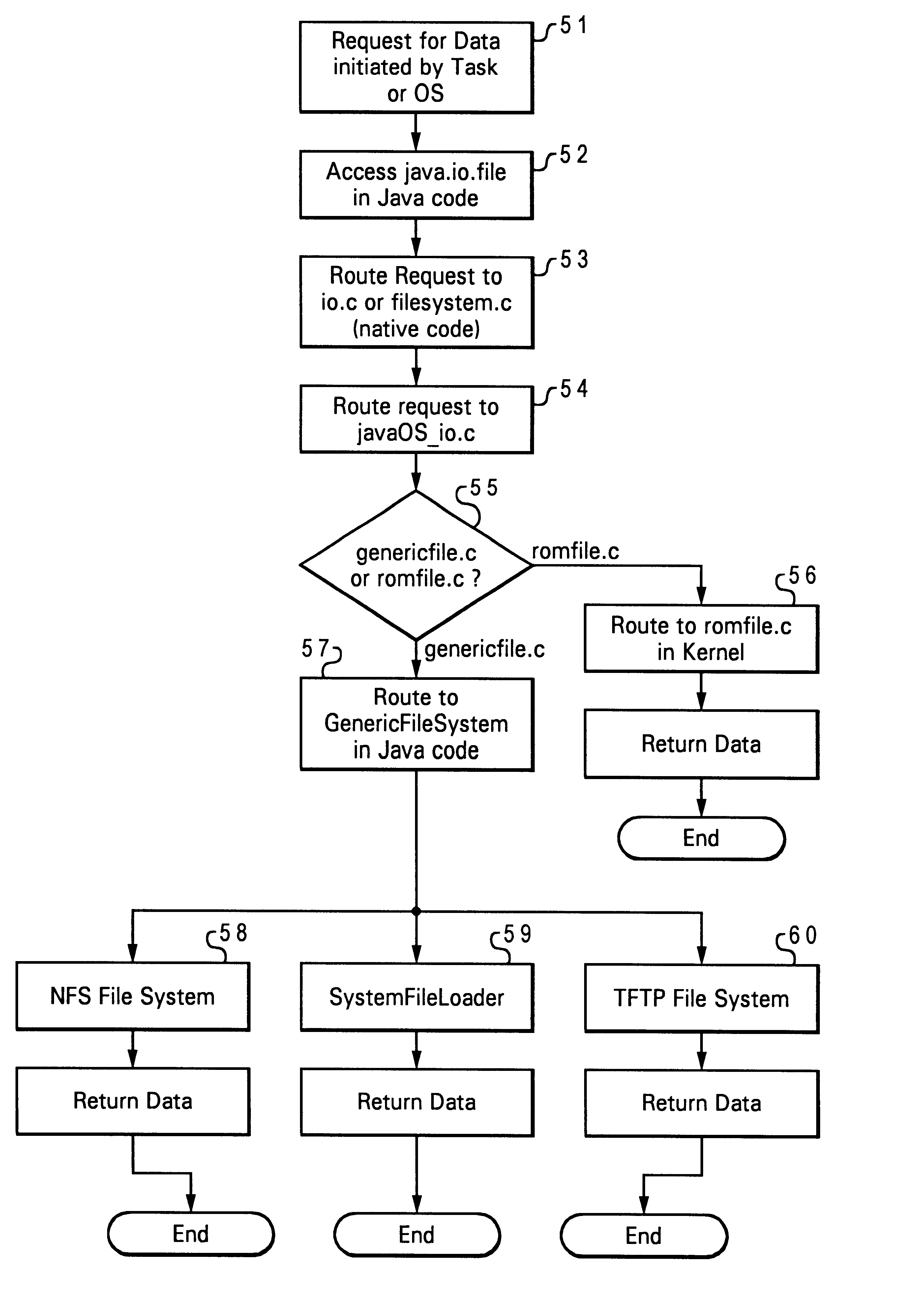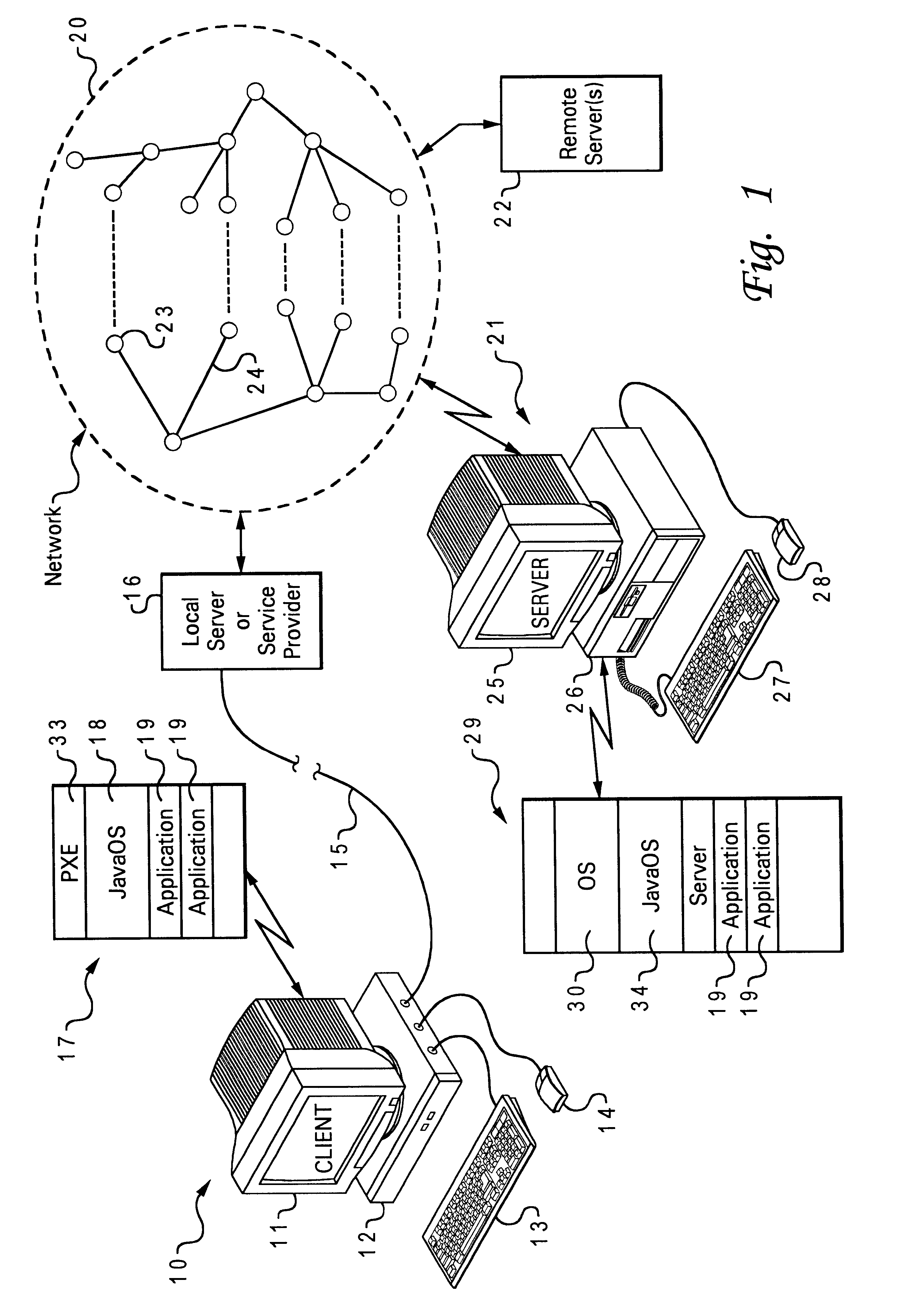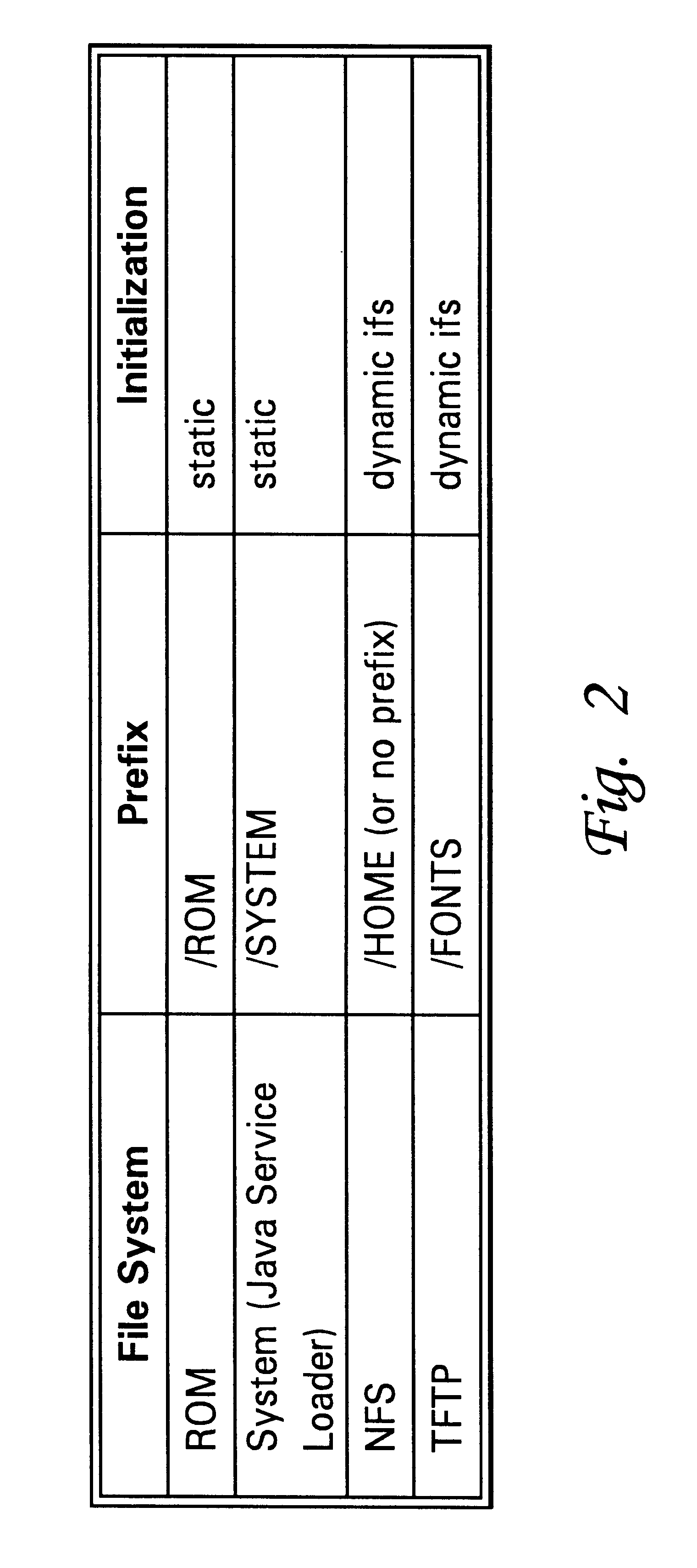Selective loading of client operating system in a computer network
a computer network and client technology, applied in the field of computer systems and networks, can solve problems such as network delays, inability to swap, and delay in boot tim
- Summary
- Abstract
- Description
- Claims
- Application Information
AI Technical Summary
Benefits of technology
Problems solved by technology
Method used
Image
Examples
Embodiment Construction
Referring to FIG. 1, a network system is shown in which concepts of the invention may be used. A client computer station 10 is employed by the user to perform local tasks as well as to obtain information from a network such as the internet. The client station 10 in this case often includes minimal hardware and software, such as a monitor 11, a small system unit 12, a keyboard 13, and a mouse 14. The system unit contains a CPU and system memory, and an adapter card or modem for connection to a network, but often no hard disk or other local persistent storage media. For example, the station 10 may be connected by a modem and a phone line 15, or by a cable, to an internet or intranet server 16 or service provider. The local system memory 17 for the client 10 must contain at least certain classes of an operating system 18, e.g., JavaOS, including code for accessing the network, such as a TCP / IP stack, which was downloaded from a remote server after the client station 10 was booted up. I...
PUM
 Login to View More
Login to View More Abstract
Description
Claims
Application Information
 Login to View More
Login to View More - R&D
- Intellectual Property
- Life Sciences
- Materials
- Tech Scout
- Unparalleled Data Quality
- Higher Quality Content
- 60% Fewer Hallucinations
Browse by: Latest US Patents, China's latest patents, Technical Efficacy Thesaurus, Application Domain, Technology Topic, Popular Technical Reports.
© 2025 PatSnap. All rights reserved.Legal|Privacy policy|Modern Slavery Act Transparency Statement|Sitemap|About US| Contact US: help@patsnap.com



